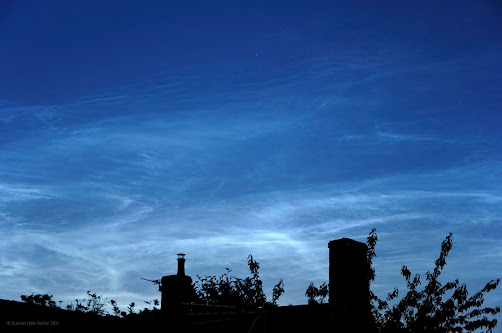I have been reading up about how to go about making visual records of variable stars. The BAA has a variable star section and on their own external website they have some guidance for beginners. Under their beginners page they list some stars for different times of the year that they think might be a good starting point. They also have An Introduction to Variable Star Observing (pdf download) which I found useful to find out how to go about making some basic observations.
So last night I thought I would have a go at seeing if I could at least identify the variable star Z Ursae Majoris (Z UMa). The couple of atlases that I have did show its location in the constellation of Ursa Major. It is near the rear of the bowl of the 'saucepan' asterism towards the stars Megrez and Phad. The nearest bright star to it is Flamsteed 66. The Variable Star Section (VSS) publish finder charts for many variable stars and the one for Z UMa can be found here. On this chart there are a list of comparison stars (labelled A to E, H, L and M) which are used to determine Z UMa's magnitude. So, anyway, armed with this chart, a pair of Opticron 8x24 binoculars and some warm clothes I went out into the garden about 10pm (BST) to see what I could see.
Unfortunately, of course, the moon was one day from full (it is full today, the 16th April) and this meant that the sky was extremely bright and perhaps not that suitable for attempting this! I sat in a tilting chair for comfort and because Ursa Major is virtually overhead at this time. I was quickly able to identify Flamsteed 66 because it is about visual magnitude 5.8 and makes a sort of isosceles triangle with Megrez and Phad. I could also make out Flamsteed 68 (labelled A and magnitude 6.3) near Megrez but could only just make out for sure star B which was magnitude 7.3. As for Z and any of the other stars that were labelled I couldn't see anything but blank sky.
So, anyway, this was a useful exercise. It made it clear that the limiting magnitude for observing stars with these binoculars in a full moon sky was about magnitude 7.3. As for my records I can say that Z UMa was fainter than magnitude 7.3 on the 15th April 2022 between 21:00 and 22:00 UT.
Another thing I did whilst I was looking at Ursa Major was to check the field of view of my 8x24 binoculars. I noticed that with the stars Alioth (delta) and Megrez (epsilon) both visible in the binoculars, the field of view wasn't much larger than these stars angular separation. Alioth has 2000.0 coordinates of RA 12h 15m 25.5s, Dec +57d 01m 57s and Megrez RA 12h 54m 01.7s, Dec +55d 57m 35s. Using a calculator to find their angular separation, it comes out at 5.43 degrees. So the field of view seems to be something like 6 degrees. This seems a bit smaller than the 7.5 degrees marked on the binoculars.
All text and images © Duncan Hale-Sutton 2022










